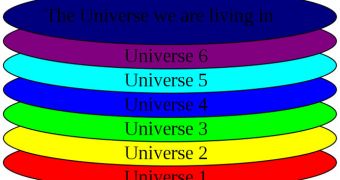Metamaterials are undoubtedly among the most interesting structures in existence today. They can be engineered in a manner that allows for them to bend light and other types of electromagnetic waves. As such, they are mostly used for such purposes as to create artificial black holes and invisibility cloaks. More and more researchers are beginning to take an active interest in them, and this can only mean that numerous innovations are bound to come our way soon, Technology Review reports.
But perhaps one of the most interesting uses for metamaterials is creating additional dimensions of space, which may function according to their own rules of physics. These adjacent spaces are apparently created when objects of various configurations are produced using these advanced materials. Their secret is the fact that they are able to tweak and fiddle around with the electric and magnetic fields that pass through them. This is why they are, for example, capable of bending light over, below and around solid objects, rendering them invisible to the casual observer.
Optical metamaterials are so peculiar that researchers have even produced a set of mathematical equations that underly the analogy between them and Albert Einstein's theory on general relativity. They concept of “electromagnetic space” has been gaining increasing popularity lately, ever since scientists proposed that metamaterials can do anything Einstein would have dreamed of. This naturally includes creating black holes and wormholes between various regions of the electromagnetic space.
University of Maryland in College Park expert Igor Smolyaninov says now that metamaterials could conceivably be used to create a multiverse. This is a type of space that astronomers imagined in some of their theories, and its existence helps lend some credence to ideas that would otherwise not work for a single Universe. According to some of these proposals, the current four dimensions (3 distances and time) are a result of the collapse of other dimensions, which may have existed in the early Universe, just after the Big Bang.
Smolyaninov argues that creating regions of electromagnetic space in which some dimensions are compacted is possible using metamaterials. He adds that substances created with these materials could feature a combination of various regions, each of which would sport its own laws of physics. The scientist explains that the topological transition areas between these regions would most likely be wormholes, and adds that they would be very interesting to study. “A similar topological transition may have given birth to our own Universe,” Smolyaninov concludes.

 14 DAY TRIAL //
14 DAY TRIAL //